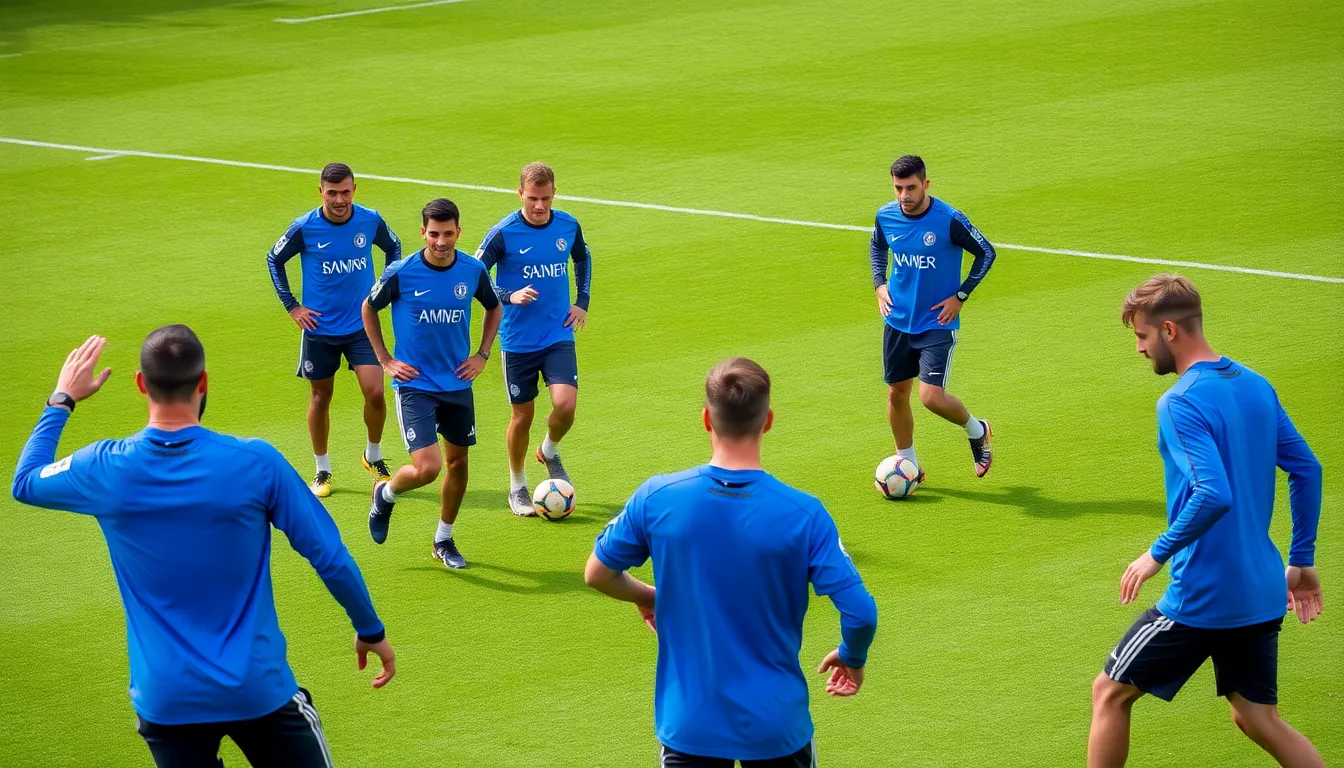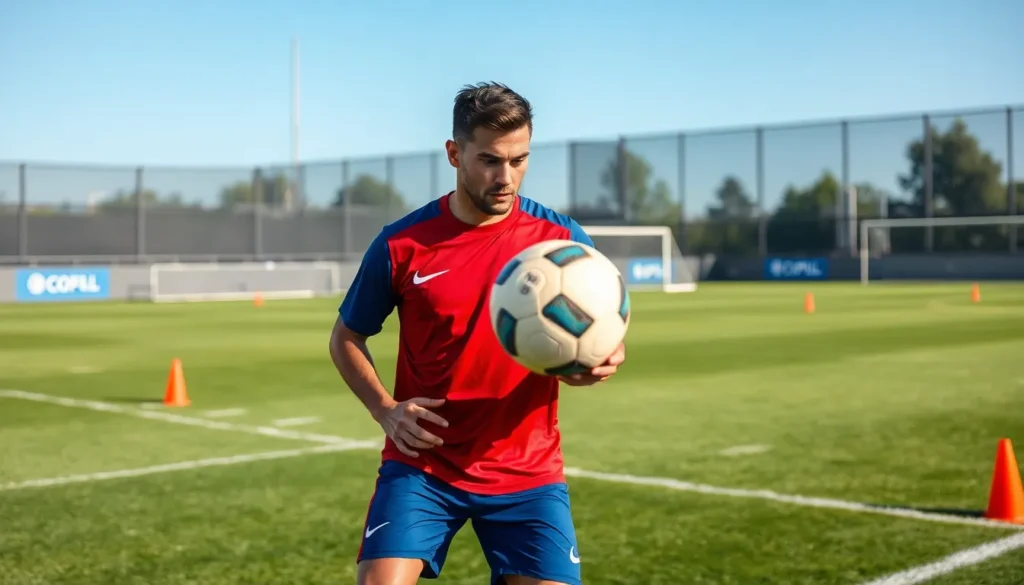Table of Contents
ToggleIn the thrilling world of FM24, match sharpness isn’t just a fancy term—it’s the secret sauce that can turn a good team into a great one. Imagine your players gliding across the pitch like they’ve just downed a double espresso. That’s the power of sharpness! It’s all about keeping those legs fresh and minds focused so every pass, tackle, and shot feels as smooth as butter.
But wait, it’s not just about training harder; it’s about training smarter. Understanding how to manage match sharpness can elevate a team’s performance from mediocre to legendary. Whether you’re battling for glory in the league or trying to avoid a relegation nightmare, mastering this aspect can be your golden ticket. So buckle up and get ready to dive into the world of match sharpness—because who wouldn’t want their players performing like they’re on a caffeine high?
Understanding FM24 Match Sharpness
Match sharpness plays a vital role in FM24, directly influencing player performance during matches. Developing this aspect requires attention to training and game-time experience, fostering an environment where players can be at their peak.
What Is Match Sharpness?
Match sharpness refers to a player’s readiness to perform optimally in games. This readiness stems from a combination of fitness, match experience, and competitive rhythm. Players who’ve recently participated in matches tend to exhibit higher sharpness levels, while those sidelined due to injury or lack of playtime may show diminished sharpness. Keeping track of this metric can help assess each player’s state before important matches.
Importance of Match Sharpness in FM24
Enhancing match sharpness significantly affects overall team performance in FM24. Higher sharpness correlates with improved decision-making and execution during games, directly impacting results. Players with elevated sharpness tend to complete passes accurately, respond quicker to changes on the pitch, and create scoring opportunities effectively. Optimizing training sessions to boost match sharpness can be the difference between winning and losing crucial fixtures.
Factors Influencing Match Sharpness

Several elements impact match sharpness in FM24, significantly affecting player performance and overall team dynamics. Key determinants include player fitness levels and the training regimen.
Player Fitness Levels
Fitness levels directly correlate with match sharpness. Players in peak physical condition demonstrate increased endurance and agility during gameplay. Cardiovascular fitness enhances stamina, enabling athletes to maintain high performance throughout matches. Strength training contributes to muscle resilience, reducing the risk of injury. Individual assessments regarding recovery and injury status also play a crucial role. Monitoring fitness metrics ensures that each player can contribute effectively to the team’s performance.
Training Regimen
The training regimen influences match sharpness considerably. Structured sessions that focus on tactical awareness, ball control, and positional play enhance a player’s readiness for competitive matches. Incorporating game-like scenarios during practice drills improves situational awareness and decision-making. Moreover, varying the intensity of training boosts both mental and physical sharpness. Setting clear and measurable targets during training maintains high engagement levels among players. Regularly reviewing and adjusting training plans to address team needs maximizes effectiveness and sharpness on match day.
Strategies to Improve Match Sharpness
Improving match sharpness requires focused strategies to maximize player performance. Utilizing regular match play and customizing training sessions enhances readiness.
Regular Match Play
Engaging in regular match play significantly boosts players’ match sharpness. Frequent participation in competitive games develops situational awareness and tactical understanding. Players gain valuable experience that translates to improved performance during actual matches. Calibrating game intensity further enhances players’ adaptation to different styles of play. Prioritizing match minutes for each player helps maintain optimal sharpness levels. In addition, prioritizing friendly matches or intra-squad games provides opportunities for players to sharpen their skills without facing undue pressure.
Customized Training Sessions
Tailoring training sessions specifically to team needs elevates match sharpness. Designing drills that mimic real-game scenarios focuses on decision-making and tactical execution. Incorporating high-intensity training exercises enhances both physical and mental sharpness. Adjusting session plans based on individual player requirements fosters optimal development. Adding variation in training intensity prevents monotony and stimulates progress. Clear performance targets ensure players grasp expectations and work towards improvement. Regularly assessing and modifying training techniques helps maintain high sharpness levels as the season progresses.
Analyzing Match Sharpness Data
Analyzing match sharpness data provides crucial insights into player readiness and overall team performance. Monitoring specific performance metrics proves essential for evaluating player efficacy during matches.
Tracking Performance Metrics
Metrics such as pass accuracy, distance covered, and touches per game highlight individual contributions. Consistent tracking of these statistics enables coaches to gauge sharpness levels effectively. Players often perform better in matches when their metrics reflect high engagement in past games. Trainers should utilize software tools to collect and analyze data, ensuring accurate assessments. Grading performance consistently allows for timely adjustments in training regimens.
Adjusting Tactics Based on Sharpness
Adjusting tactics according to match sharpness enhances competitive strategies. It’s important for coaches to tailor game plans based on player readiness levels. Identifying players with diminished sharpness can inform crucial decisions for match lineups. Players at peak sharpness levels might take on more challenging roles, maximizing their contributions to the team’s efforts. Furthermore, modifying formations can accommodate players exhibiting varying sharpness levels. Prioritizing effective player utilization significantly impacts overall match outcomes.
Achieving optimal match sharpness is vital for any team aiming to elevate its performance. By focusing on tailored training regimens and regular match play, coaches can significantly enhance their players’ readiness. Monitoring metrics and adjusting tactics based on sharpness levels allows for more strategic decision-making during games. As teams prioritize match sharpness, they’ll likely see improvements in decision-making and execution on the pitch. Ultimately, a commitment to maintaining high sharpness not only benefits individual players but also contributes to overall team success throughout the season.




